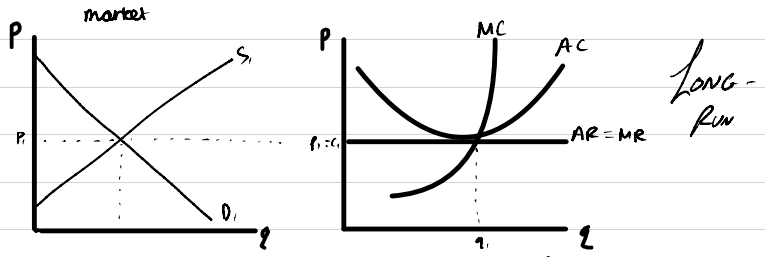Perfect competition is a market structure where there are many buyers and selllers. There are no barriers to entry, perfect information, and no product differentiation.

The diagram shows the outcome in the short run. There is quantity of q1 and a price of p1. Firms have the objective to profit maximise. The supernormal profits are shown by the rectangle between 0-p1-c1-q1. Also, the demand curve for each firm is perfectly elastic because there are infinite substitutes which are identical, so firms cannot change the market price (where supply meets demand).
Because there are supernormal profits and no barriers to entry, new firms will enter the market. This means that market supply will shift to the right. As a result, each firm gets less demand because there are more perfect substitutes available. The diagram below shows the new price which is lower and quantity which is higher. Also, there is no supernormal profit for firms in the market.

The short-run outcome is good because there is allocative efficiency since AR=MC at q1. The long-run outcome is good because there is also allocative efficiency (AR = MC) and productive efficiency as firms operate at the lowest point of the AC curve (AR = MC). Allocative efficiency is important because it means welfare is being maximised and the distribution is optimal for consumers as they are not over-paying for goods and services.
However, the disadvantage with perfect competition is that there is no dynamic efficiency. This is because there is no supernormal profit being made in the long-run. This is bad because firms would not have enough money to re-invest so we would not be able to see much innovation over time.